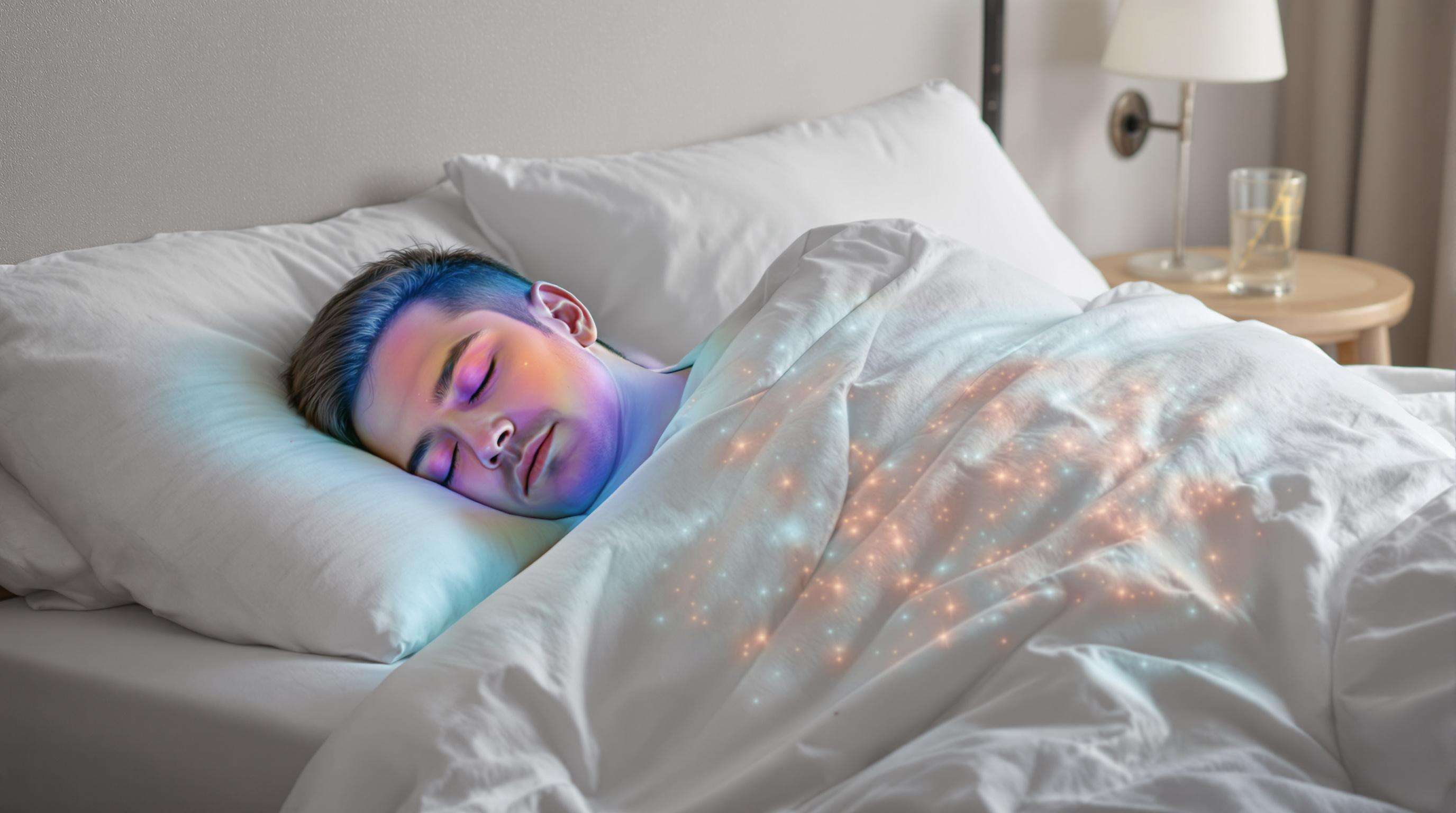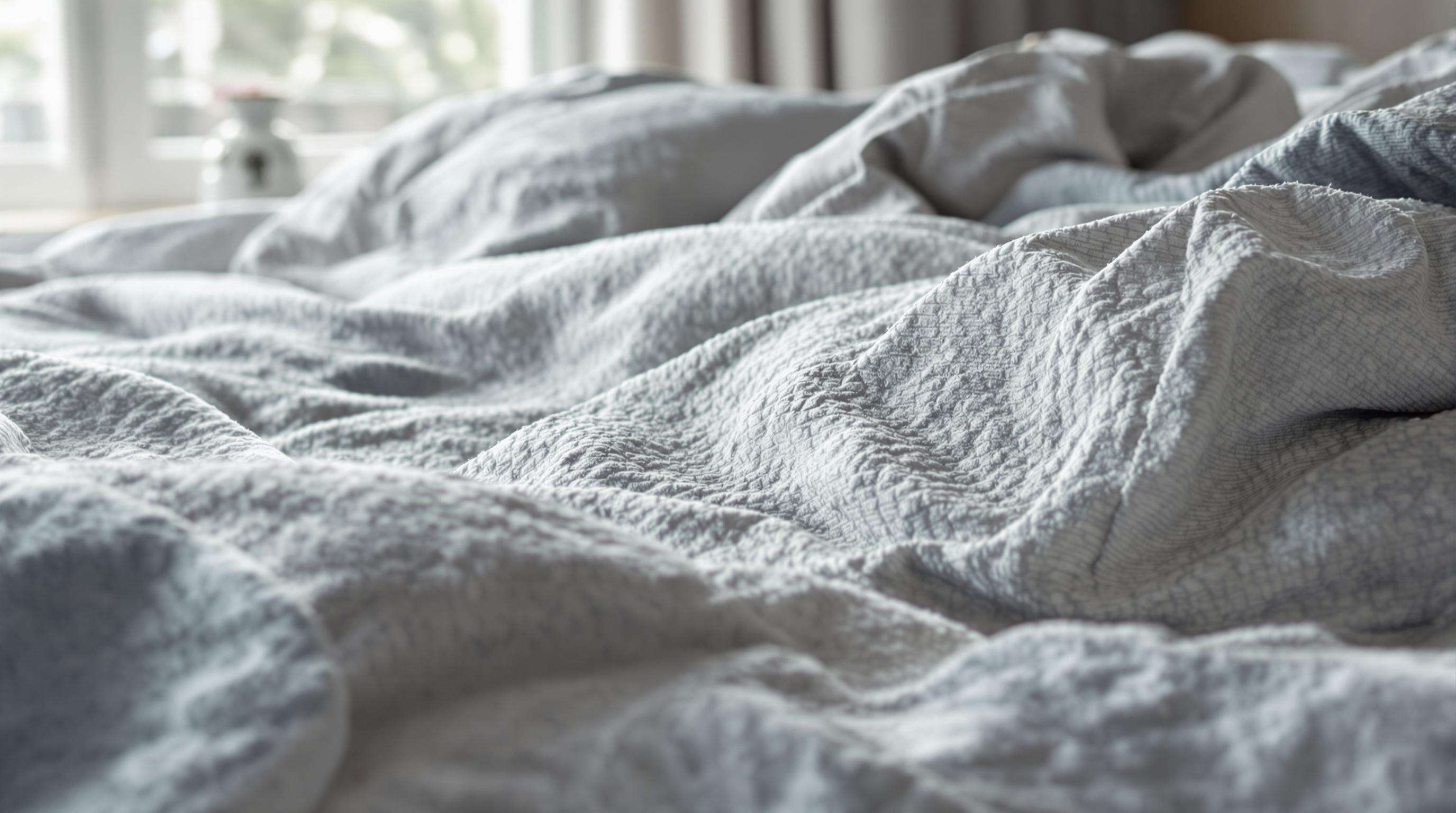The fabrics touching your skin nightly play a pivotal role in sleep quality, with material properties directly affecting thermoregulation, comfort, and recovery.
Cotton and linen stand out when it comes to letting air circulate, which means they keep us cooler than polyester by around 18 to 22 percent according to Textile Science Journal from last year. Silk feels great against sensitive skin because its surface is so smooth, whereas wool actually pulls away moisture during the night, preventing that uncomfortable sweating sensation. Then there's Tencel, which is basically a type of lyocell fiber. What makes this material special is how well it handles both strength and wetness at the same time, absorbing twice as much moisture as regular cotton does. That's why many people find Tencel particularly comfortable in places where humidity runs high. On the flip side, even though polyester costs less money upfront, most folks who get warm while sleeping will tell you it doesn't breathe well at all. Studies show that about two thirds of those who struggle with staying cool through the night have trouble getting proper rest when wearing polyester fabrics.
When it comes to getting a good night's sleep, natural fibers just seem to beat synthetic materials hands down. Research tracking people over three years showed those sleeping on cotton had about 30 percent less skin irritation problems compared to folks using polyester bedding. The breathability factor is pretty impressive too - linen has this amazing porous structure that lets air circulate around 40% better than most other fabrics. On the flip side, synthetic blends tend to trap body oils and allergens, which creates conditions where bacteria can grow much faster, maybe even 2.5 times more so. People who struggle with allergies will appreciate knowing that tightly woven organic cotton sheets let through about 87% less dust mites than those cheap microfiber blends sold everywhere these days.
Percale cotton and bamboo rayon are pretty good at moving moisture away from the body compared to regular fabrics, taking away about two to three times as much sweat. While higher thread counts (over 300) might seem better, they actually tend to trap heat instead of letting it escape. Most people find that sheets between 180 and 250 threads work best because they still allow plenty of airflow, around 75 cubic centimeters per square centimeter per second if we get technical about it. For summer nights especially, lighter bedding matters a lot for staying comfortable throughout the night. Bedding that wicks away moisture can cut down on those annoying wake ups caused by getting too hot by roughly a third in warmer weather conditions.

When we start to fall asleep, our body's core temperature typically goes down about 1 to 2 degrees Fahrenheit. This happens because of our internal clock, those daily rhythms that tell us when to be awake and when to rest. What people often don't realize is how important bedding materials are for this natural cooling process. If sheets trap too much heat or block air movement, the body can't cool properly, making it harder to drift off and shortening the time spent in deeper stages of sleep. Recent research published in Energy and Built Environment showed something interesting: even small changes in skin temperature around half a degree Celsius can mess with sleep patterns. The study also found that folks who sleep on breathable fabrics such as linen wake up less frequently throughout the night compared to those using synthetic materials like polyester.
Seasonal duvet adjustments are critical for thermal homeostasis:
When body heat doesn't disperse properly at pressure points like hips and shoulders, it causes those annoying microclimate issues that lead people to shift positions roughly four times more often during the night than they would otherwise. Some newer mattress toppers now incorporate phase change materials in their fabric panels which actually absorb about 40 percent more heat compared to regular cotton fabrics. Hot sleepers might want to consider combining breathable summer bedding made from moisture wicking materials with pillows designed to promote better airflow around the head area. Thermal imaging research suggests this combination can help reduce heat buildup on the torso by approximately 31 percent, making for a cooler, more comfortable sleep experience overall.
High nighttime temperatures disrupt sleep cycles by up to 40% (Sleep Foundation 2024), making lightweight summer bedding essential for hot sleepers. Breathable fabrics like bamboo lyocell and Tencel Lyocell reduce heat retention through superior air permeability, with studies showing they lower skin temperature by 2–3°C compared to traditional cotton.
Nighttime overheating increases wakefulness by 35% (Journal of Sleep Research 2023). Lightweight materials like linen and moisture-wicking polyester blends counteract this by balancing thermal insulation with airflow. For example, research indicates moisture-wicking fabrics reduce night sweats by 62% in humid climates.
A 2024 Sleep Foundation report found households rotating bedding seasonally improved sleep efficiency scores by 78%. Summer-specific strategies include:
Hybrid systems like dual-sided comforters (wool winter / linen summer) simplify transitions while maintaining year-round comfort.

Regular bedding tends to collect all sorts of allergens such as dust mites, mold spores, and pet hair which really bother people with allergies. Spending eight hours each night sleeping on these contaminated surfaces can actually make breathing problems worse for folks suffering from asthma. About 45 percent of those nights when allergy sufferers struggle to sleep are because their noses get blocked up or they start wheezing due to stuff in their bedding. Synthetic materials that don't breathe well are especially bad at this since they hold onto moisture, creating a perfect home for tiny mites to multiply. On the flip side, bedding made from tightly woven fabrics acts like a barrier against these allergens while still letting air circulate properly. Doctors who treat asthma patients often recommend hypoallergenic bedding first thing because around seven out of ten times, getting rid of the allergen source makes a real difference in symptom relief.
Cotton, silk, bamboo lyocell, and certain synthetic blends that act as allergy barriers actually make it hard for irritants to stick around. Many of these materials have gotten certified by third party hygiene groups because they block out particles smaller than 10 microns which is about the same size as dust mite droppings, yet still let moisture escape through them. Bamboo has this natural ability to pull away sweat and moisture, so it keeps things drier inside bedding. Studies show this can cut down on mold growth problems by around two thirds when compared regular cotton sheets. People who tend to get hot at night might find relief using summer weight bedding made with Tencel fibers. These products resist allergens while staying cool and breathable throughout the night. When used regularly over time, many folks report needing their allergy meds less often during sleep hours and generally sleeping longer periods overall.
Q: How do different bedding materials affect sleep quality?
A: Different bedding materials affect sleep quality by influencing thermoregulation, comfort, and moisture absorption, which are important for maintaining optimal sleep conditions.
Q: Are natural fibers better than synthetic fibers for bedding?
A: Yes, natural fibers like cotton and linen tend to offer better breathability and less skin irritation compared to synthetic fibers, making them preferable for long-term comfort.
Q: What are the benefits of hypoallergenic bedding?
A: Hypoallergenic bedding reduces exposure to allergens and irritants, improving respiratory health and comfort during sleep, particularly for allergy sufferers.
 Hot News
Hot News2025-09-04
2025-09-02
2025-09-01
2025-07-08
2025-06-10
2025-11-27